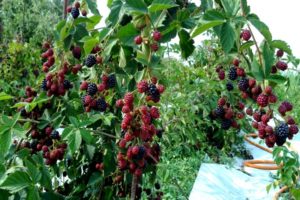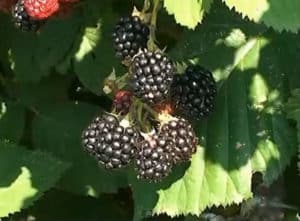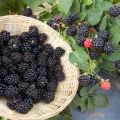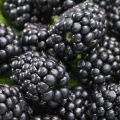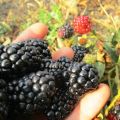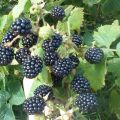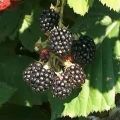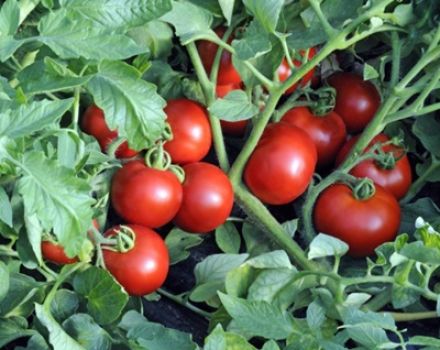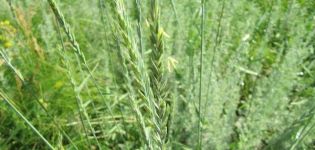Description and characteristics of the Natchez blackberry variety, reproduction, planting and care
There are a large number of varieties on the seedling market. Among them, those that are easy to care for are popular. Natchez is one of the representatives of the blackberry that does not have thorns on the branches. The shrub bears fruit early. When other varieties of berries hang green on the branches, Natchez is ready to eat.
The history of breeding Natchez
Blackberries were bred in America in 2007. The breeding stages were carried out at the University of Science of Arkansas. Natchez is a young variety of blackberries.
The merits and demerits of culture
Among the advantages are:
- extended period of fruiting;
- lack of thorns;
- large berries;
- early ripening of fruits;
- storage in the refrigerator for up to 14 days;
- attractive presentation.
Disadvantages of the variety:
- does not withstand severe frosts;
- likes direct sunlight;
- high probability of damage to branches due to fragility.
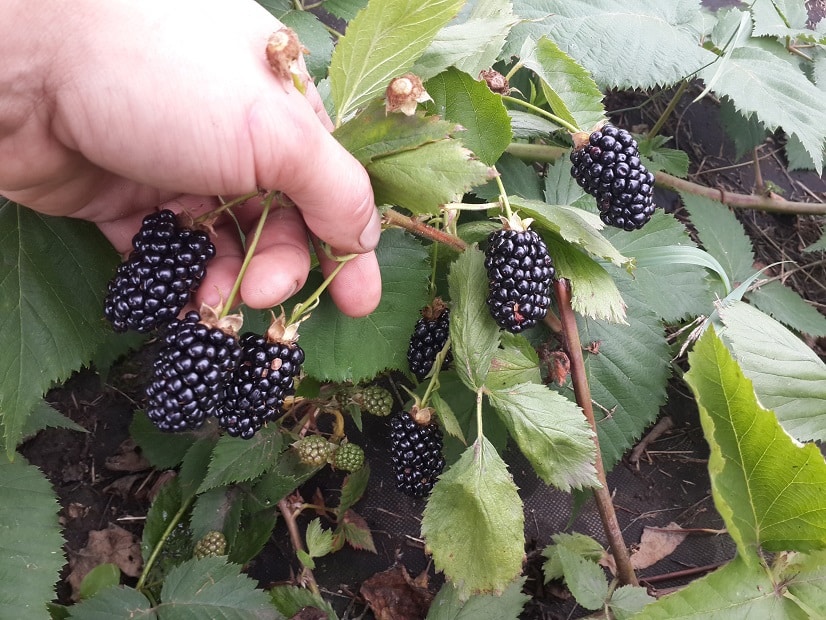
Despite the many advantages, for competent cultivation, you need to pay attention to the disadvantages.
general description
Many gardeners liked Natchez. It is included in the group of leaders along with other varieties of blackberries. The original taste and beautiful appearance distinguish the shrub among the European and Western assortment.
External characteristics
Natchez looks similar to other blackberry varieties. After studying the main characteristics, you can distinguish the shrub from other representatives.
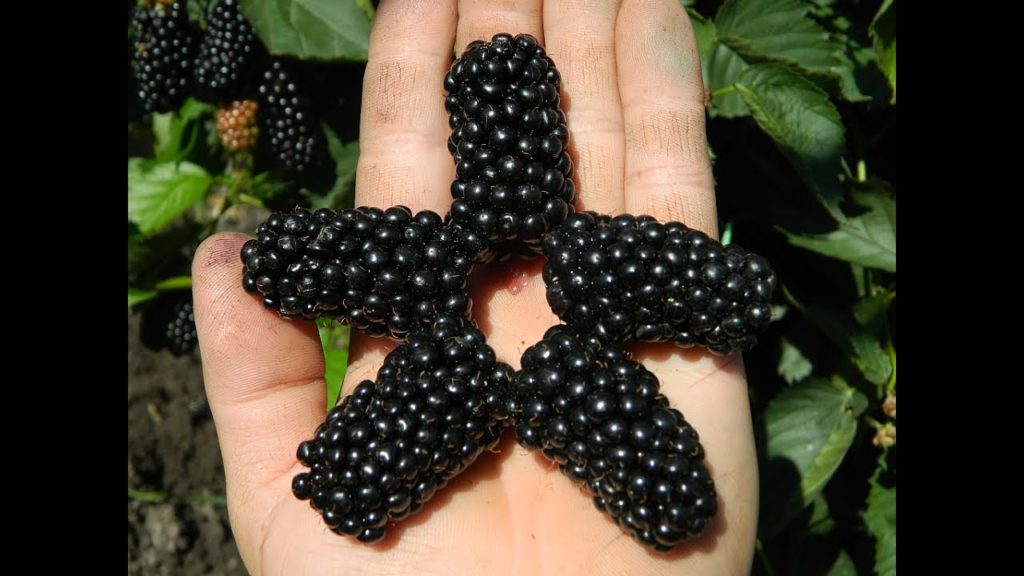
Berry
Large blackberries taste great. The weight of one berry reaches 13 g. The seeds inside the pulp are small. The cluster contains 15-30 fruits.
Bush and leaves
Shoots grow rapidly and reach 4-6 m in length. Erect and thornless. They break in the wind, so it is recommended to tie the branches to the support.
Root system
Well developed, close to the surface.
Immunity to diseases and pests
The shrub rarely gets sick, as it has a stable immune system.

Resistance to negative temperatures
In winter, it does not withstand cold weather below -14 ° C. Requires cover with the onset of the first frost.
Reproduction methods
A suitable breeding method is cuttings.Apical shoots take root. The survival rate is high; in rare cases, the planting of a new sprout is required.
Recommended growing regions
Due to its low resistance to frost, the variety is grown in places with a warm climate.
Flowering and ripening periods
On average, flowers begin to appear in mid-May. White with six petals. Ripening occurs in late June or early July.
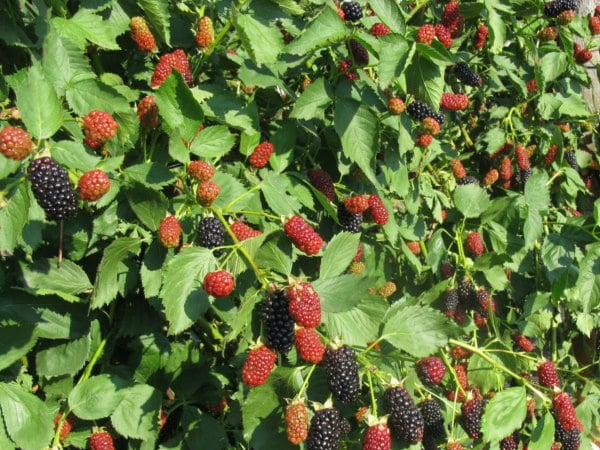
Fruiting dates and yield indicators
It is characterized by extended fruiting. Lasts from 1 to 1.5 months. Up to 16 kg of blackberries are harvested from one bush.
Scope of berries
Blackberries are consumed fresh. It is an excellent base for making juices, jams, wine and compotes. The berries are suitable for freezing and drying.
How to plant blackberries in the garden
Proper planting is the key to getting a healthy shrub.

Optimal timing
Blackberries are planted in April before bud break. In the fall, it is not recommended to plant the variety in the ground. Natchez will not survive the winter, as it will not have time to settle down.
Required soil composition
The shrub chooses fertile loamy soils. Drainage is mandatory. The oxidation level is low or neutral.
Choosing the right place
The area where the bush is planted should be well lit. In the landing area, make sure that the blackberries are in partial shade. Also, the site is protected from strong winds.
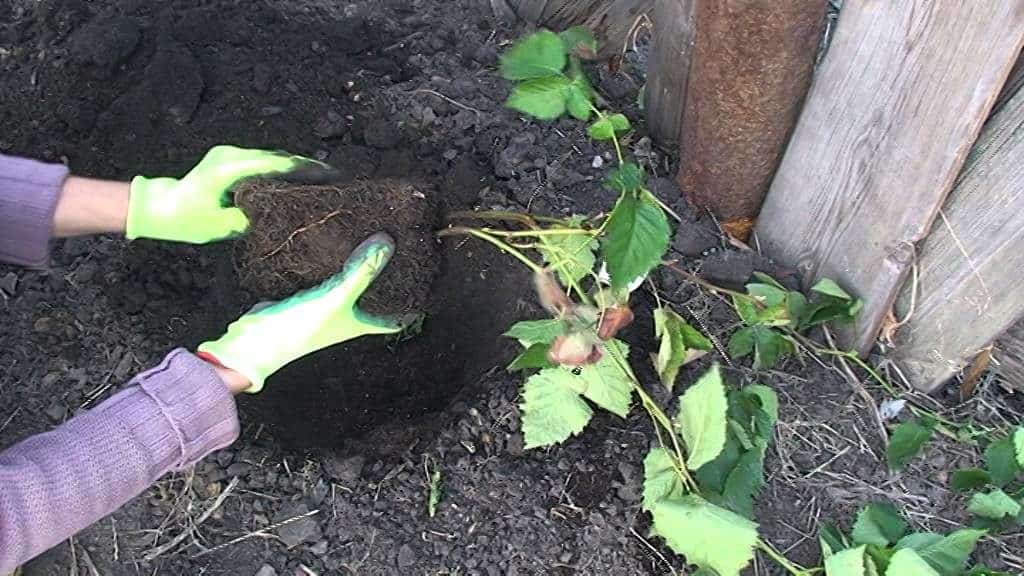
Preparation of planting material
No special operations are carried out before planting a seedling in the ground.
Landing technology and scheme
Disembarkation instructions:
- The place where the blackberry will grow is being dug up. Weeds are removed.
- The depth of the pit reaches 50 cm.
- Most of the pit is filled with a mixture of potassium, superphosphate and humus.
- A seedling is placed at the bottom of the hole, and the root is straightened.
- During the filling of the hole, the sprout is shaken in order to eliminate air gaps between the roots.
- A hole is dug around the planted bush with 2 buckets of water pouring into it.
- The area around the blackberry is mulched.
- The final stage is pruning the seedling. There should be no more than 40 cm above the ground.
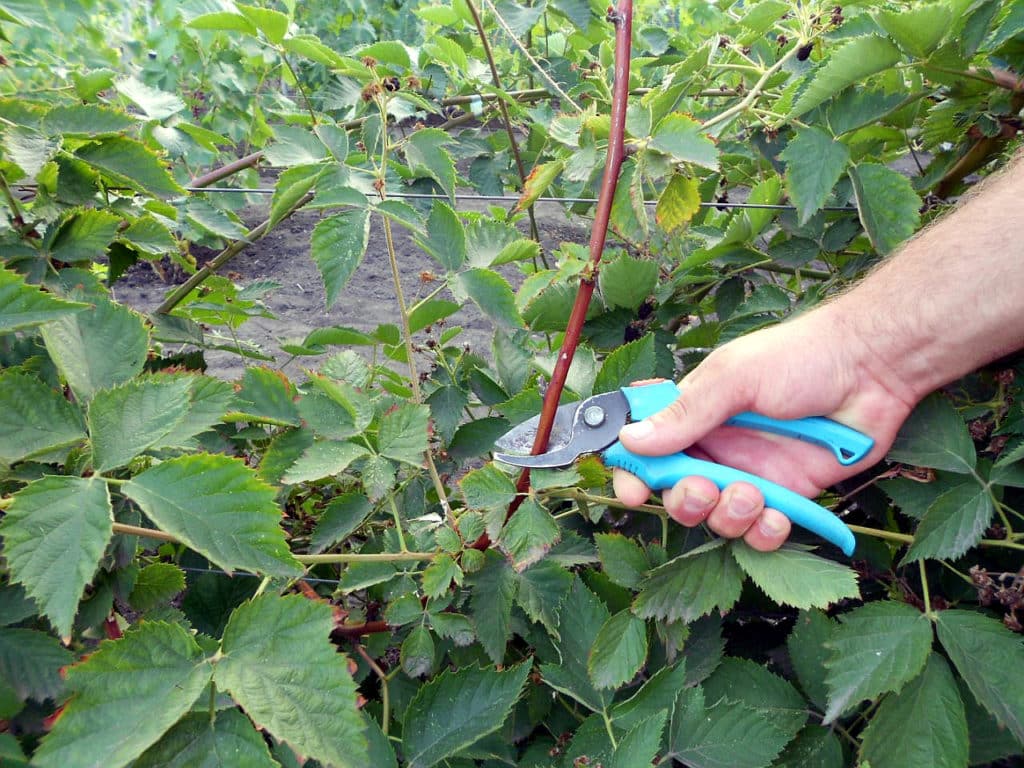
A distance of 1.5 to 3 m is maintained between the holes. Space is necessary for the bushes, as they form long shoots. It is also taken into account that it is necessary to put a support.
Agricultural technology for growing blackberries
The result of caring for a blackberry is noticeable in the quantity and quality of the crop.
Irrigation
Natchez is watered once a week with 4 to 5 buckets of water. At the time of the formation of ovaries and during the ripening of berries, the volume of water increases 3 times. Watering is carried out twice a week.
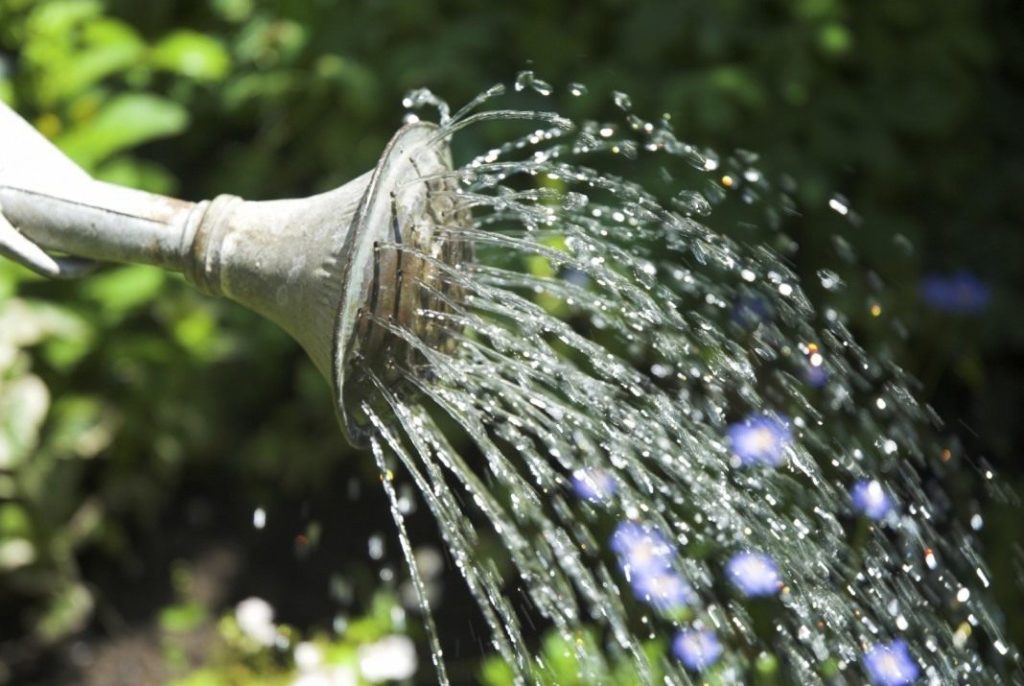
Fertilizer
Feeding is carried out 4 times per season:
- In the spring before bud break. The plot of land around the bush is covered with humus or ammonium nitrate, after which it is dug up.
- Before flowering. Poultry manure or mullein is used as fertilizer. The mixture is diluted in water (10-12 l).
- After fruiting. The surface of the soil is sprinkled with a mixture of superphosphate and wood ash. Then loosening is carried out.
- Before wintering.
Top dressing is required, as it increases the resistance of immunity to diseases and gives strength to bear fruit.
Trimming and tying to a support
Natchez is a blackberry variety that forms long shoots. The shrub is pruned twice a year. It is recommended to remove branches in early spring before the buds swell. A suitable period is the end of autumn, when the shrub will shed all the leaves.
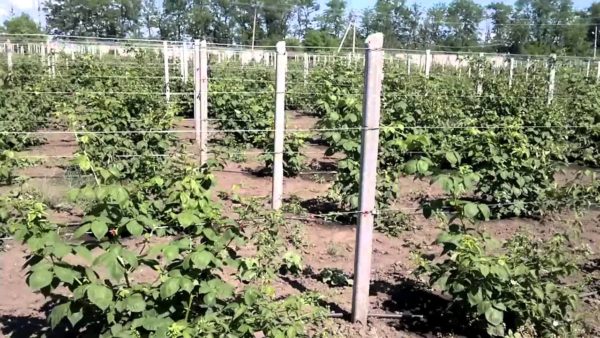
Blackberries can be grown without tying them to a support. Under the weight of the berries, the branches bend to the ground and can break. Therefore, it is best to grow Natchez using supports or trellises.
Protection against diseases and pests
For the purpose of prevention, certain measures are taken to combat common diseases. Blackberry infection occurs through other fruit shrubs and trees. Bordeaux liquid will help against rust.Affected leaves are removed, and the garden area is cleared of weeds.
Tobacco dust will rid Natchez of root pests. The composition is mixed with water, after which all the bushes are watered with liquid. Thus, they are fighting with bears and beetles.
Tobacco along with laundry soap is a good remedy for aphids. 250 g of ash is added to a bucket of water and left to infuse for 3 days. After that, the liquid is filtered and mixed with the same amount of water.
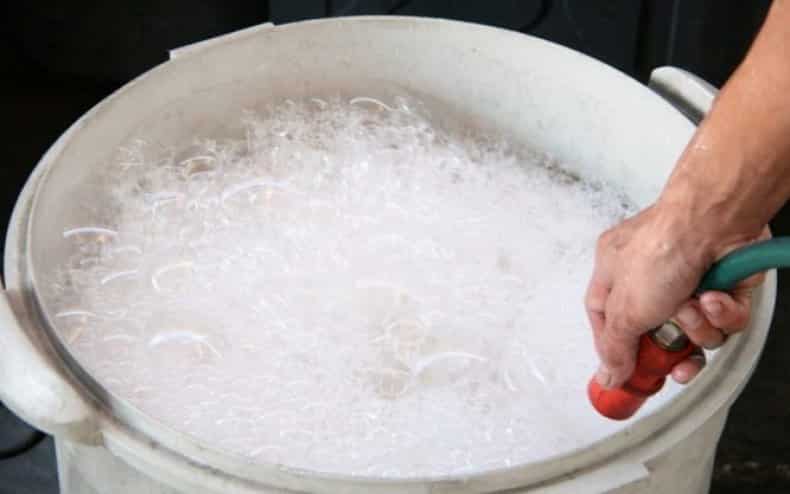
The soap is grated and also added to the solution. The resulting liquid is sprayed on the bushes. The time of the procedure is spring (before the leaves bloom) and summer (before the beginning of fruiting).You can prevent the appearance of ticks on the branches using the mulching procedure.
Preparing for winter
Bare branches bend to the ground and are covered with insulation from above. This could be:
- tops of vegetables;
- corn leaves;
- humus;
- hay;
- sawdust;
- straw.
Natchez is a blackberry variety that is suitable for growing in the garden near the house and for commercial production. The berry is easy to pick, and the aroma and taste of the fruit will appeal to gourmets. Despite the fact that the variety was recently bred, it is a favorite among other representatives of the culture.
